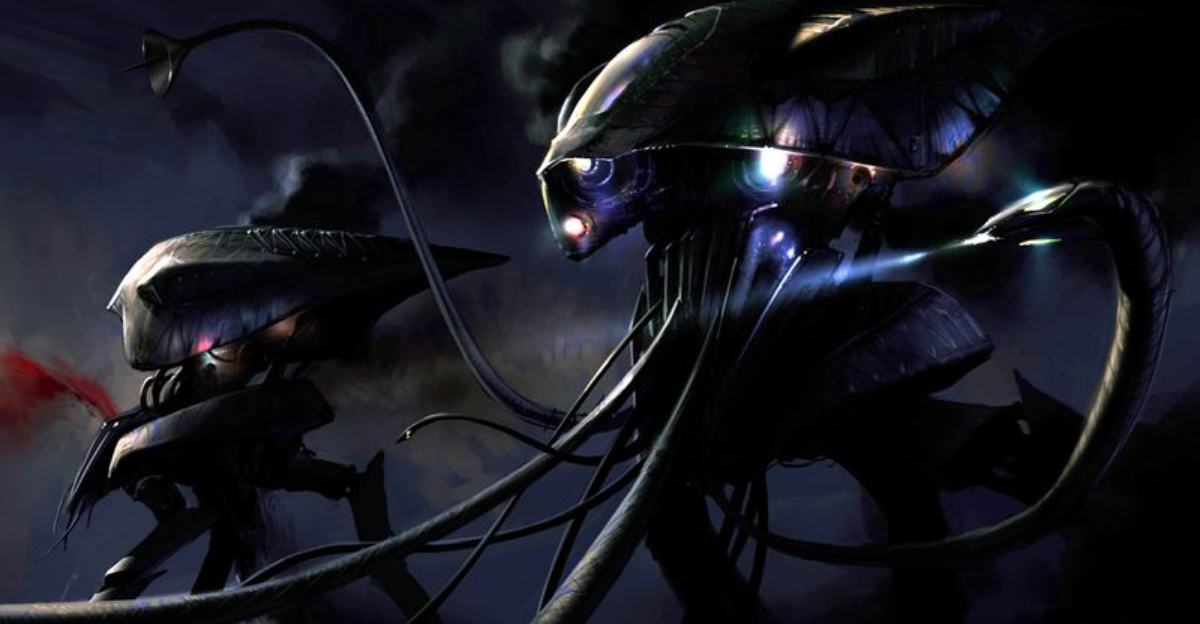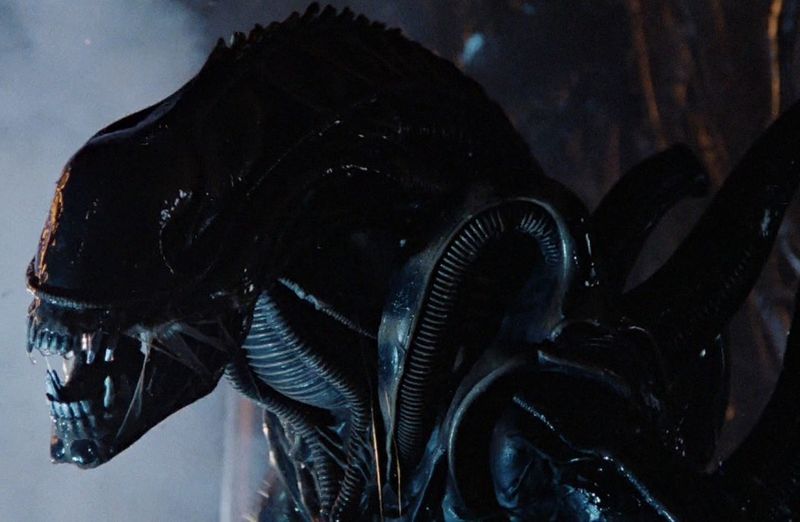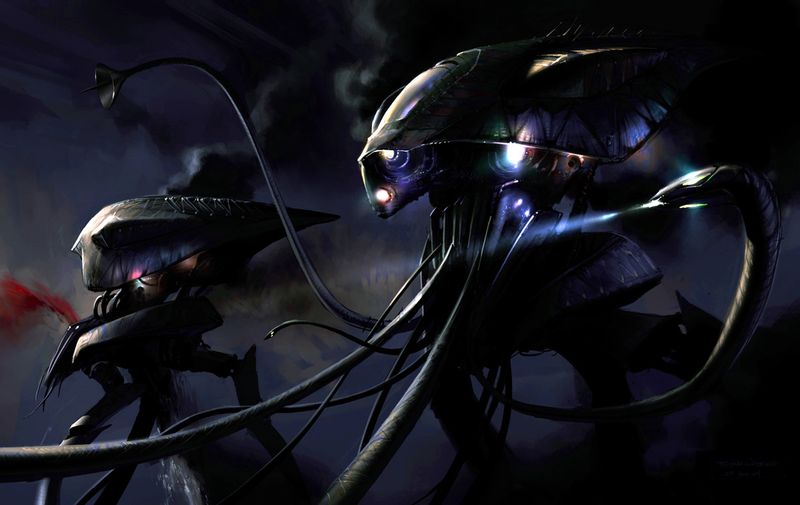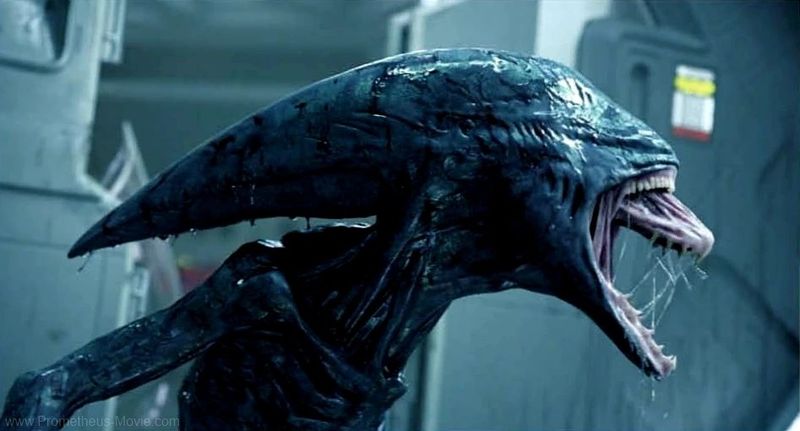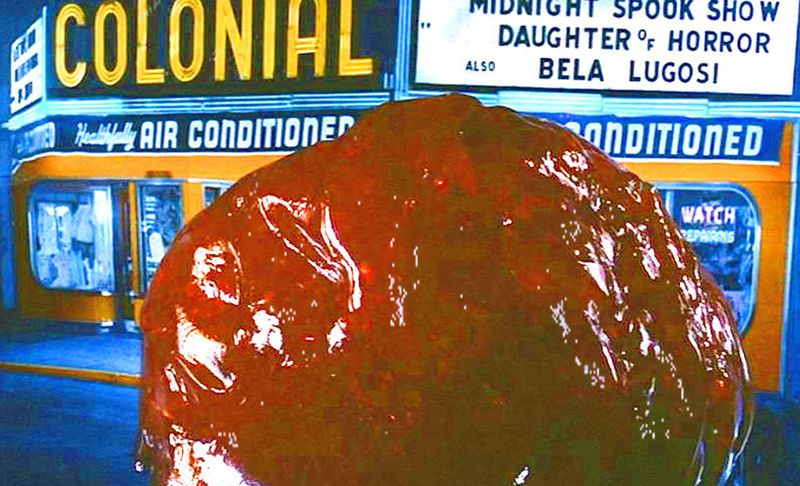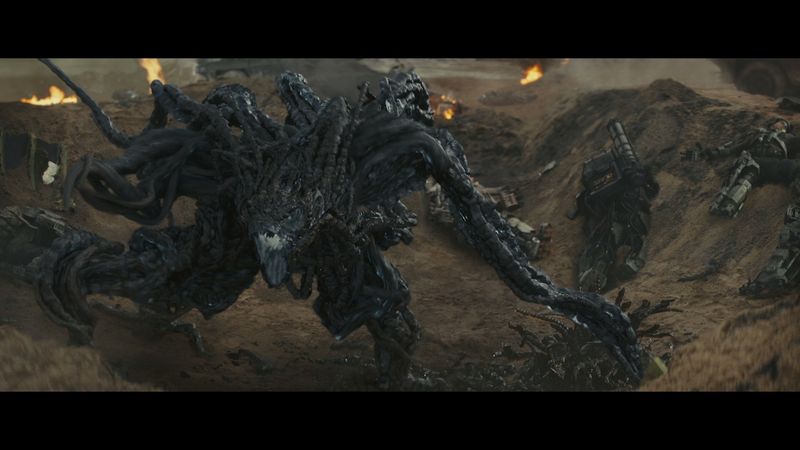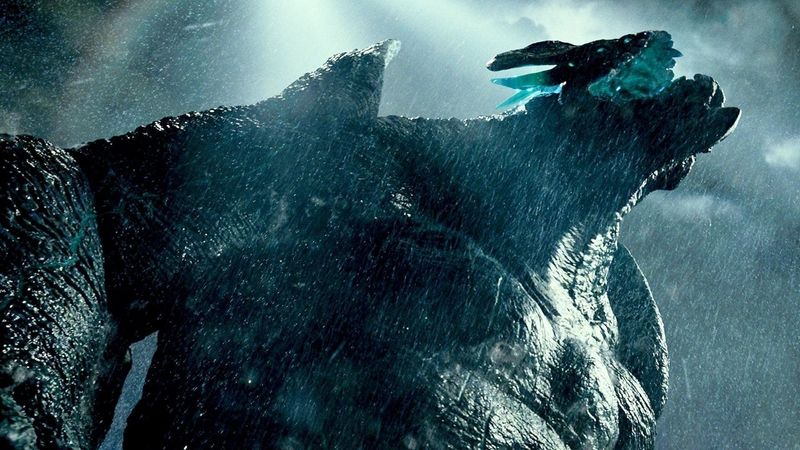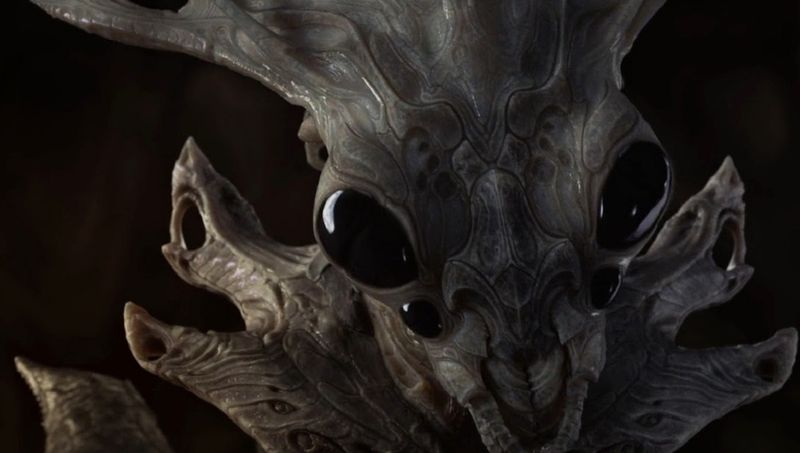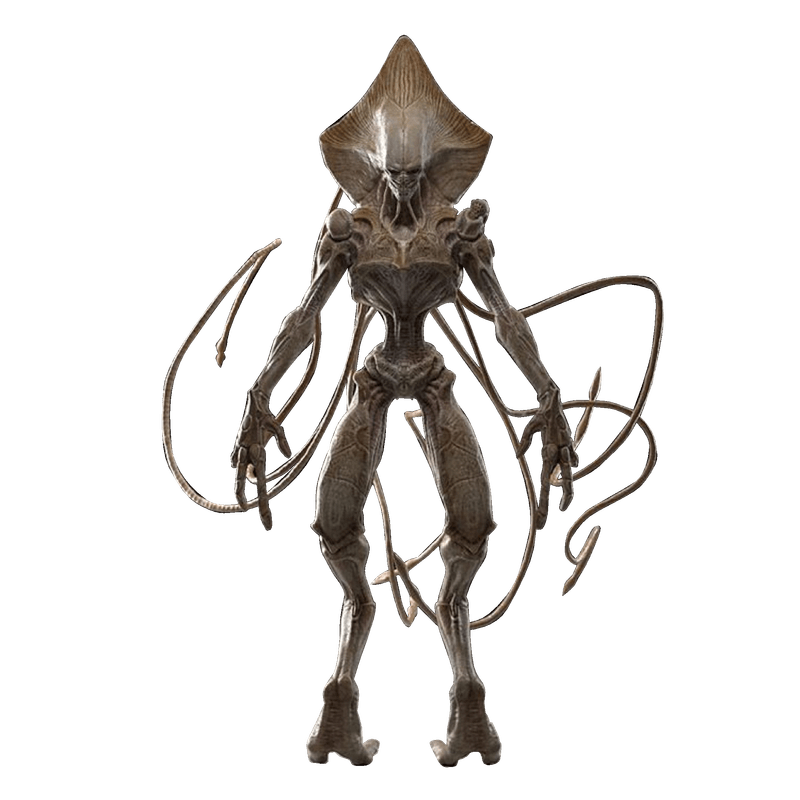Aliens have always sparked fear and fascination in equal measure. From the mysterious and menacing to the downright terrifying, these extraterrestrial beings have captured the imagination of filmmakers and audiences alike. This list explores the 15 most terrifying alien creatures in movie history, each with its own unique brand of horror. Get ready to be spooked by bizarre anatomies, frightening abilities, and haunting backstories that make these aliens stand out in the world of cinema. Whether they’re lurking in the shadows or launching full-scale invasions, these creatures are sure to leave a lasting impression.
Xenomorph from Alien
The Xenomorph from the “Alien” franchise is a nightmare of sleek black terror. With its elongated head, razor-sharp teeth, and acid blood, it lurks through the narrow corridors of spaceships, hunting its prey with relentless precision. One can only imagine the sheer panic as this monstrosity creeps closer, its silent movements betraying no mercy.
The creature’s unsettling life cycle, beginning as an invasive parasitic embryo, adds layers to its horrifying allure. A symbol of primal fear, the Xenomorph embodies the ultimate predator, bringing a visceral terror to all who encounter it.
Its design, by H.R. Giger, remains iconic, forever etched into cinema’s dark corners.
Did you know? Its acidic blood is a built-in defense mechanism, making it even more formidable.
Predator from Predator
Standing tall and menacing, the Predator from the eponymous film series is an embodiment of the ultimate hunter. Cloaked in invisibility, it stalks its prey with advanced technology, making every encounter a battle of wits and survival. The creature’s honor-bound code adds an intriguing complexity to its terrifying presence.
Its unique physicality, from the dreadlocked tendrils to mandibles that snap with lethal intent, only amplify its otherworldly menace.
This alien warrior’s thrill of the hunt is as merciless as it is calculated, sparking fear and respect in equal measures.
Fun fact: The clicking sound was created by actor Peter Cullen, who wanted it to mimic the purring of a cat.
The Thing from The Thing
In the frozen wasteland of Antarctica, “The Thing” lurks, an entity capable of assimilating and imitating any life form it contacts. Its grotesque transformations and eerie mimicry make it a terrifying adversary. The paranoia it induces among its victims—wondering who might be human, who might be “The Thing”—is chilling.
Every encounter with this shapeshifter is unpredictable, as it morphs into horrific, unnatural shapes, testing the limits of sanity. Its ability to hide in plain sight makes it a constant, unnerving threat.
The film’s practical effects are a testament to 1980s horror, leaving a lasting legacy of fear.
Did you know? The creature’s scream was a mix of various animal sounds, adding to its unsettling nature.
Clover from Cloverfield
Emerging from the depths of the ocean, Clover from “Cloverfield” is a gargantuan force of destruction. Towering over skyscrapers, its sheer size and power wreak havoc upon New York City, leaving ruin in its wake. Amidst the chaos, its mysterious origins remain shrouded, adding to the terror it incites.
The creature’s unpredictability, coupled with the film’s found-footage style, immerses the audience in a visceral experience of panic and survival.
This colossal being’s relentless onslaught is both terrifying and awe-inspiring, as it reshapes the city’s skyline.
Trivia: The filmmakers kept Clover’s design under wraps until the film’s release, enhancing its mystery.
Tripods from War of the Worlds
H.G. Wells’ Martian Tripods, depicted in multiple adaptations of “War of the Worlds,” bring a chilling vision of alien invasion. These towering machines, armed with heat rays, lay waste to cities, reducing human defenses to ashes. The sound of their colossal steps echoes dread through the hearts of survivors.
Their impenetrable shields and relentless assault make them a formidable foe, representing the fear of humanity’s helplessness in the face of an advanced alien force.
Whether in novels or movies, these Tripods stand as a symbol of alien superiority and human vulnerability.
Did you know? Orson Welles’ radio adaptation in 1938 caused panic, as listeners believed the invasion was real.
Giger’s Alien from Prometheus
In “Prometheus,” Giger’s Alien returns with a fresh, yet hauntingly familiar design. These creatures, known as Engineers, offer a chilling glimpse into the origins of the Xenomorphs. Their eerie biomechanical appearance, coupled with their godlike stature, evokes both awe and dread.
The film explores themes of creation and destruction, as these beings manipulate life with little regard for consequences. The unsettling design, reflecting H.R. Giger’s unique artistic style, contributes to their terrifying allure.
Their role as creators of the Xenomorphs weaves a complex narrative of horror and intrigue.
Interesting fact: The Engineers’ design was inspired by ancient mythology and religious symbols.
The Blob from The Blob
The Blob, a gelatinous entity from the classic film, devours everything in its path, growing larger with each victim. Its seemingly unstoppable spread creates a creeping horror, as it engulfs the unsuspecting town. This amorphous creature embodies the fear of being consumed by the unknown.
Its simplicity belies its terrifying nature, as it silently overtakes everything, a relentless force without motive or mercy.
The film captures the essence of 1950s sci-fi horror, leaving audiences wary of what lurks in the shadows.
Fun tidbit: The Blob was made using a mixture of silicone and red dye, giving it a unique, otherworldly appearance.
Mimics from Edge of Tomorrow
The Mimics from “Edge of Tomorrow” are a formidable alien foe, with their lightning-fast movements and hive-mind intelligence. These multi-limbed creatures pose a deadly threat, capable of anticipating human tactics with chilling precision.
Their relentless assault on Earth pushes humanity to its limits, forcing innovative strategies for survival. The film’s time-loop element adds layers to the narrative, emphasizing the Mimics’ terrifying adaptability.
Their angular, alien design and cunning tactics make them a memorable adversary in the sci-fi genre.
Did you know? The film was inspired by the Japanese novel “All You Need Is Kill,” which adds a unique cultural twist to the story.
Kaiju from Pacific Rim
In “Pacific Rim,” the Kaiju rise from the ocean’s depths, colossal creatures challenging humanity’s survival. Their bioluminescent patterns and immense size make them a sight to behold, as they battle giant Jaegers in epic confrontations.
These monsters bring chaos and destruction, pushing humanity to construct equally formidable war machines. Their varying forms offer a spectrum of terror, each with a unique set of abilities and traits.
The film’s grand scale and intense action sequences highlight the Kaiju’s majestic yet terrifying presence.
Fun fact: The term “Kaiju” is derived from Japanese, meaning “strange beast,” capturing their essence perfectly.
The Buggers from Ender’s Game
The Buggers from “Ender’s Game” represent a formidable alien race with a hive-mind structure. Their insect-like appearance and complex societal hierarchy pose a significant threat to humanity. The conflict’s core lies in understanding and overcoming miscommunication and fear.
Ender’s strategic genius in the simulated battles against the Buggers showcases the tension between survival and empathy. As the story unfolds, the true nature of these creatures reveals itself, challenging perceptions of friend and foe.
The film delves into themes of morality, leadership, and the consequences of war.
Did you know? The novel’s original title was “Ender’s War,” reflecting its central theme of conflict.
The Descolada from Speaker for the Dead
Though not a creature, the Descolada from “Speaker for the Dead” is a biological nightmare. This virus alters DNA, reshaping native life forms in a destructive manner. Its insidious nature makes it an unseen threat, as it manipulates the genetic makeup of host worlds.
The fear it instills is not through physical might, but through the potential for irreversible change and devastation. As the story unfolds, the challenge of coexisting with such a powerful force becomes apparent.
Exploring themes of adaptation and survival, the Descolada serves as a reminder of the fragility of life and ecosystems.
Interesting tidbit: The virus is symbolic of the unknown consequences of human intervention in alien environments.
The Arachnids from Starship Troopers
In “Starship Troopers,” the Arachnids, or Bugs, present a relentless and brutal enemy. Their insect-like forms, with sharp limbs and massive mandibles, swarm human defenses with sheer numbers and ferocity. The pseudo-military setting amplifies the tension, as soldiers face off against this terrifying alien threat.
Each encounter with these creatures becomes a desperate fight for survival, highlighting themes of militarism and propaganda. Their hive-like society raises questions about the nature of conflict and the portrayal of “the other.”
The film’s satirical tone and intense action sequences underscore the Arachnids’ fearsome presence.
Trivia: The film’s visual effects were groundbreaking at the time, bringing the Bugs to life in a visceral manner.
The Harvesters from Independence Day
The Harvesters from “Independence Day” embody the classic alien invasion trope, with their massive motherships and destructive intentions. Their goal is clear: to harvest Earth’s resources, leaving devastation in their wake. The sheer scale of their technology makes them an overwhelming force.
Humanity’s struggle for survival against such advanced aliens creates a narrative of resilience and unity. These extraterrestrial invaders are implacable, intelligent, and deadly, evoking both fear and fascination.
The film’s climactic battles and iconic scenes of destruction have cemented the Harvesters in science fiction lore.
Fun fact: The iconic scene of the White House being destroyed became a defining moment in 1990s cinema.
The Engineers from Prometheus
In “Prometheus,” the Engineers are enigmatic beings whose advanced technology and cryptic motives create a sense of cosmic dread. Their imposing presence and connection to the origins of humanity raise questions about creation and destruction.
The Engineers’ silent, godlike demeanor suggests a power beyond comprehension, as they manipulate life with seemingly divine intent. Their role in the genesis of the Xenomorphs ties into a broader narrative of existential fear and curiosity.
The film’s exploration of these beings invites viewers to ponder the mysteries of life and the universe.
Did you know? The Engineers’ design was intentionally ambiguous, reflecting the film’s themes of unanswered questions.
